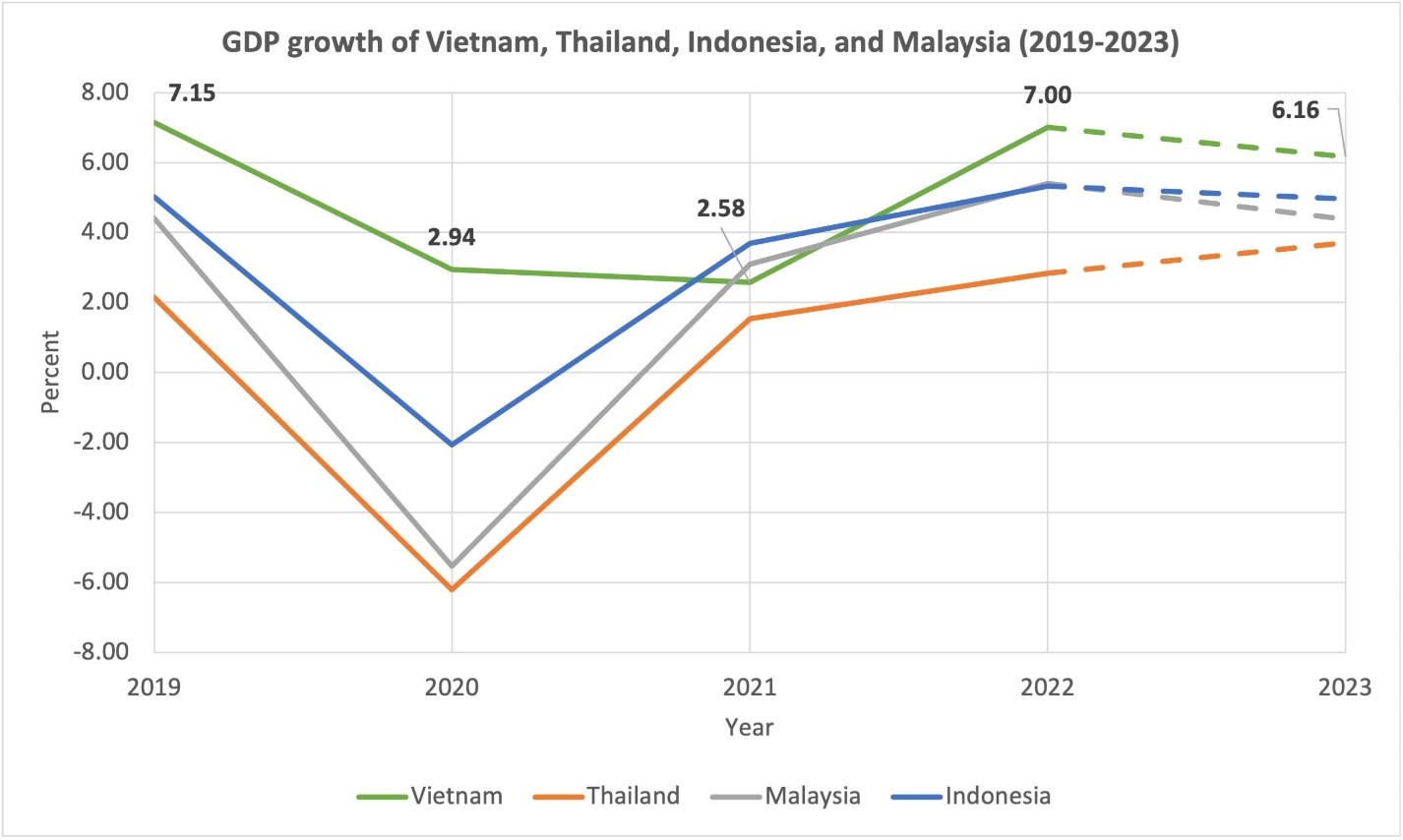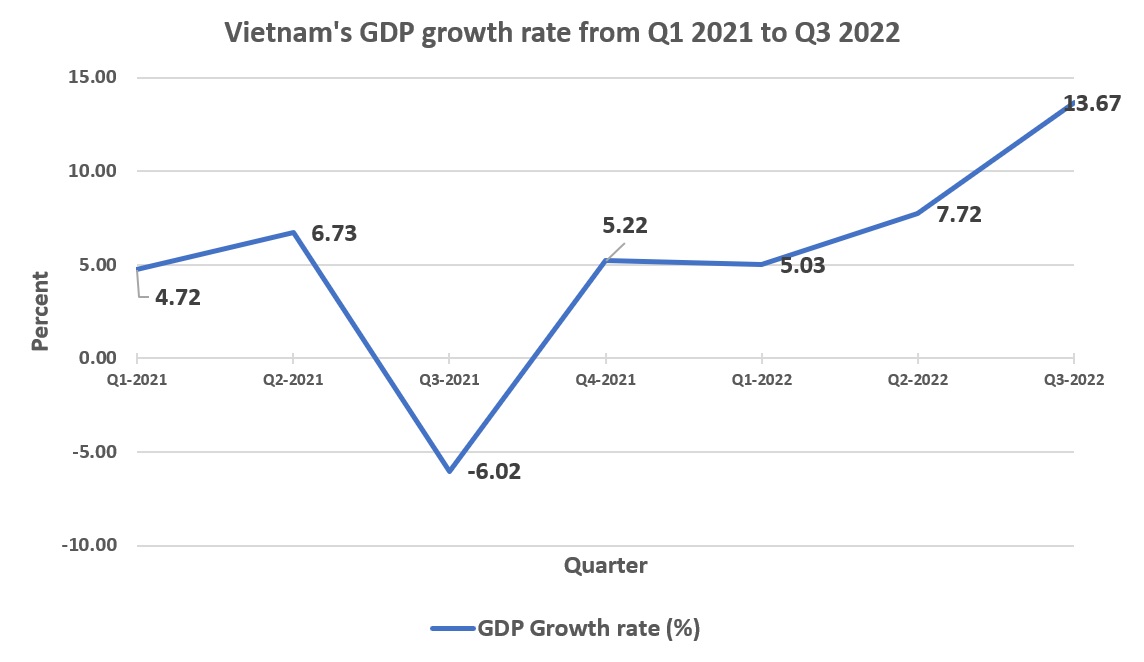In terms of incoming FDI, Vietnam attracted 25.1 billion USD in the first 11 months of the year (down 5% year-on-year) according to the Foreign Investment Agency under the Ministry of Planning and Investment. The agency cited two factors behind the falling registered capital – COVID-19 preventive measures in early 2022 and global uncertainties.
However, what’s interesting is the rising proportion of FDI destined to high-tech and high value-added activities. Many observers comment that FDI in complex manufacturing or R&D ventures is a sign that Vietnam is capturing an increased part of global value-added manufacturing. This kind of manufacturing is a key enabler to achieve socio-economic growth over the next decades in Vietnam. Moving away from highly labour-intensive and low in complexity production, 2022 has shown strong commitments from Samsung and Apple’s suppliers to Vietnam’s capabilities to upskill its workforce, to comply with global manufacturing standards, and to implement good governance along the supply chain.
A case in point for that migration from labour-seeking to skills-seeking FDIs is the recent announcement by Foxconn, Apple’s oldest and largest original equipment maker (“OEM”) to invest 300 million USD in a new factory in Bac Giang. Foxconn will assemble MacBooks there. Producing these laptop computers requires a more complex supply chain, better trained manufacturing workers, and higher precision machinery than the production of Apple's earbuds that has started in 2020 in the same province.
The recent large investments by Apple’s suppliers, Samsung, Lotte, and Danish toy manufacturer Lego signal a whole basket of encouraging news for the future of Vietnam. Surely, these investors will bring money and create employment. In addition, academic studies show clearly that there are other positive spillovers to the whole economy. For example, workforce and managerial talent gets trained in these companies to global best practices. Some studies demonstrate that foreign firms push domestic companies to become more productive through competitive pressures and increased efficiency. Also, Vietnam is likely to benefit from examples of increased transparency, better corporate governance and corporate citizenship (ensuring that companies assume social, cultural and environmental responsibilities), in addition to manufacturing methods that have a lower environmental footprint.
2022 was a remarkable year for the whole world. A sharp increase in political risk with armed conflicts in Europe which disrupted fertiliser, wheat and energy markets, went along with significant increases in the volatility of commodity prices and financial markets. Being a reliable partner, and at the same being agile, is a difficult balance to strike. In the context of a more uncertain future, Vietnam’s government and businesses have been playing their cards well and should do their best to continue their efforts in 2023.
Story:
Dr Burkhard Schrage, Senior Lecturer and Program Manager, Management and MBA programs, RMIT University Vietnam
Ms Nguyen Ngoc Hong Tram, Research Assistant, RMIT University Vietnam
--
A version of this article was published by The World & Vietnam Report.
Masthead image: Dong Nhat Huy – stock.adobe.com







